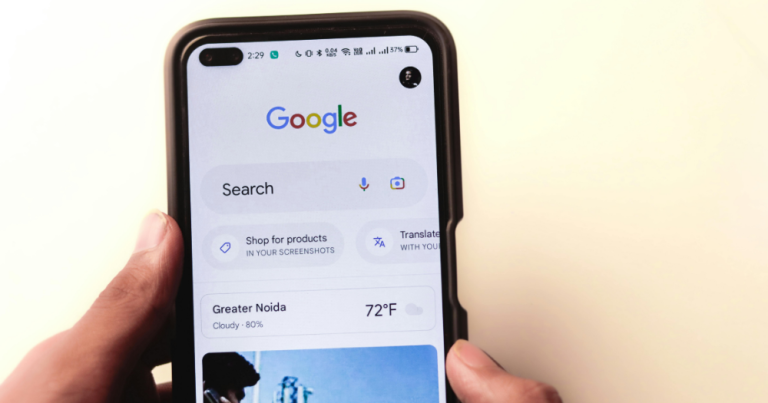
Parents searching for schools and enrichment classes don’t just click—they evaluate. And in education marketing, that means every step in your funnel must feel trustworthy. The debate that keeps resurfacing for school marketers is this: should you run Facebook & Instagram lead form ads, or push parents to a dedicated landing page?
Both tactics work, but they work differently. In this article, I’ll dissect the pros and cons of both approaches, highlight real-world benchmarks from Singapore and APAC schools, and expose the traps marketers fall into when choosing between lead forms and landing pages.
This is part of our main series on Facebook & Instagram Ads for Education Marketing.
Parents are cautious decision-makers. Signing up for a preschool trial or enrichment class is not like buying sneakers—it involves trust, safety, and a long-term commitment.
• Lead form ads reduce friction by letting parents submit details directly inside Facebook or Instagram.
• Landing pages give you more space to educate, persuade, and qualify.
The question is not which is “better” overall, but which fits your campaign goals, parent personas, and cost-per-enrolment targets.
Lead form ads let parents register without leaving Meta’s platform. This reduces drop-offs—especially on mobile, where 90% of parents in Singapore browse social media.
According to Facebook lead costs for preschools explained, cost-per-lead can be 20–30% lower with lead forms compared to landing pages.
But lower CPL doesn’t always equal lower cost per enrolment. Parents who convert via a two-click lead form may be less invested. This leads to:
• More unqualified leads.
• Higher no-show rates for trial classes.
• Wasted follow-up time by admissions teams.
Connect with our expert team to transform your enrolment process with proven digital marketing strategies that deliver real results.
Connect with us! →Landing pages let schools tell their story. Parents can see photos, curriculum highlights, testimonials, MOE compliance, and PDPA disclaimers before committing.
Our article on landing page optimization for education Google Ads shows that a well-structured landing page can lift enrolment conversion rates by 40–60%.
The challenge? Every extra click risks a drop-off. If your landing page loads slowly or isn’t mobile-optimized, you could lose half your traffic before parents even read your headline.
Here’s a benchmark we observed across 12 preschool campaigns in Singapore (2024–2025):
Metric | Lead Form Ads | Landing Pages |
Average CPL | SGD $22 | SGD $30 |
Qualified Lead % | 55% | 72% |
Show-up Rate for Trial Class | 35% | 61% |
Cost per Enrolment | SGD $530 | SGD $470 |
Takeaway: Lead forms bring cheaper leads, but landing pages bring more committed parents.
• Lead form ads: 280 leads at $21 CPL → 32 confirmed trial visits → 8 enrolments.
• Landing page ads: 190 leads at $32 CPL → 50 confirmed trial visits → 16 enrolments.
The landing page strategy generated 2x more enrolments at only 15% higher spend.
👉 See a full breakdown in our article: Preschool ads: high CTR vs high enrolments.
Your business deserves more. Let ThriveMediaSG help your business Increase Sales through digital marketing.

Parents’ trust calculus is different from other verticals. In Top 10 education marketing mistakes in Singapore, we highlighted how over-optimizing for clicks backfires.
• Lead forms: Great for “curious clickers” and time-strapped parents.
• Landing pages: Better for parents who want reassurance before committing.
Low CPL feels good in dashboards but is often misleading. Schools should track cost per enrolment, not just CPL—explained in detail here.
Parents who click into a landing page expect deeper content than those who stay on a lead form. Tailor your messaging.
Collecting parent details requires PDPA disclaimers—covered in our guide on MOE & PDPA rules every education marketer must know.
80%+ of Singapore’s education leads come from mobile. If your landing page isn’t mobile-first, lead forms will always outperform.
• For quick sign-ups (e.g., trial classes, webinars).
• When targeting top-of-funnel audiences like cold parents discovering you for the first time.
• In industries with high CPCs where reducing friction is critical (see: Google Ads benchmarks for tuition centres in Singapore).
• For mid-to-bottom funnel campaigns where trust and detail matter.
• When promoting premium programs with higher fees (parents need more reassurance).
• If you’re running remarketing campaigns (see: Case study: tuition centre scaling with remarketing).
Education SMEs face higher ad costs than retail. CPCs for preschool-related keywords can reach SGD $8–12. This tempts schools to chase cheaper leads via lead forms.
But culturally, Southeast Asian parents often research extensively before committing. They ask peers, check MOE approvals, and value face-to-face assurance. A barebones lead form ad without a branded landing page feels “too transactional.”
This mismatch explains why landing pages, while pricier upfront, often yield better ROI in Singapore’s education sector.
Industry experts echo this balance between frictionless sign-ups and trust-building storytelling.
• HubSpot research shows that form length impacts lead quality more than CPL.
• Social Media Examiner notes that trust-building assets like testimonials and explainer videos lift enrolment intent significantly.
• Marketing-Interactive reports that in APAC, parents value transparency—schools that highlight MOE licensing see higher click-to-enrolment rates.
These findings align with what we see in Singapore preschool and tuition campaigns.
• Use lead form ads with qualifying questions (e.g., child’s age, preferred location).
• Sync directly with your CRM to shorten follow-up times.
• Build a dedicated landing page with testimonials, curriculum highlights, and a virtual tour video.
• Test different CTA placements (top vs bottom of page).
The best-performing campaigns in Singapore often combine both:
• Lead forms for cold audiences.
• Landing pages for remarketing and parents already considering enrolment.
So, lead form ads or landing pages? The real answer is: parents trust what feels authentic and informative.
• Lead forms = speed and volume.
• Landing pages = trust and quality.
Smart education marketers in Singapore should test both, track enrolments (not just leads), and adjust by program type and audience.
we shares analysis, strategies on digital marketing everyday.
This service is not intended for persons residing in the E.U. By clicking subscribe, I agree to receive news updates and promotional material from Thrive Media SG

















Our team consists of seasoned digital marketers, bringing years of hands-on expertise driving results for SMEs and enterprises throughout the APAC region.
from first click to final sale—across Meta, Google, TikTok, YouTube, and your CRM so you can see what’s working and what’s not.
Your videos, landing pages, ads, and data are aligned under one strategy no more juggling vendors.
Budgets shift based on real-time performance, not monthly meetings.
Leads and traffic you already have get optimized for higher ROI and less waste.
Clear reports, honest feedback, and no jargon—even when results aren’t perfect.
Digital Marketing isn’t just about running ads—it’s about turning data into visible growth.

